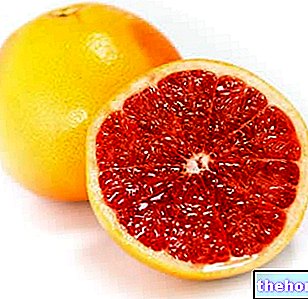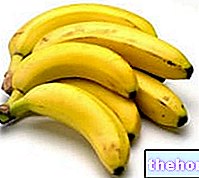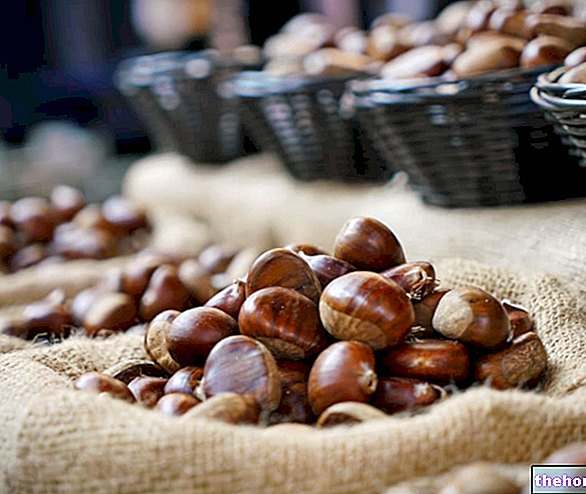Attention!
The term "milk of", if referring to any product not constituted by mammary secretion, is to be considered conceptually improper.
Any possible reference in the text has the sole purpose of adapting to the terminology with which most frequently (in colloquial terms) refers to such products; therefore, it is not opposed to the current legislative framework.
What is coconut milk?

In Italy, coconut milk is generally used as a secondary ingredient for the preparation of desserts or as a substitute for cream to make sauces, accompanying sauces and sweet creams. Coconut milk, on the other hand, is a very popular ingredient in Malaysia, India, the Philippines, Thailand and many other Southeast Asian countries.
Features
Coconut milk should not be confused with the water of the same name: while in fact the milk is extracted by squeezing the pulp, coconut water represents the semitransparent liquid enclosed within the nut.
Similar to cow's milk only in appearance and consistency, coconut milk does not contain traces of lactose, which makes it suitable for feeding subjects sensitive to this sugar. Furthermore, being completely vegetable, coconut milk is included in the list of foods. allowed in the diet of strict vegetarians (vegans).
Another advantage of coconut milk is the absence of cow's milk proteins (eg casein), to which many people are intolerant or sensitive.
Similarly to other types of vegetable milk (soy milk, rice milk, oat milk, almond milk, kamut milk), coconut milk does not contain cholesterol, which is omnipresent in animal-derived milks.
Despite its vegetable origin and the absence of cholesterol, coconut milk is very nutritious, provides many calories and is rich in saturated fat.
Nutritional properties
Not all coconut milks are the same: they mostly differ in the percentage of fat present, ranging from 5-7% ("low-fat" coconut milk), to 20-22% ("fat" coconut milk). In general, coconut milk should be consumed in moderation due to the high quantity in terms of fat.
Specifically, coconut milk is rich in medium-chain fatty acids, including lauric acid. Despite being a saturated fatty acid, lauric does not affect plasma lipids (unlike some long-chain fatty acids such as palmitic and myristic). Moreover, it has been shown that the lauric acid of coconut milk contributes to raising the levels of good HDL cholesterol, thus exerting a preventive effect on cardiovascular risk. In other words, coconut milk is credited with potentially preventive capacities on the development of diseases affecting the heart and vessels.
However, what has been said does not mean that coconut milk can be consumed recklessly: just think that 100 ml of coconut milk provide 197 Kcal.
Coconut milk provides a fair amount in terms of fiber (2.13g / 100g of product): in this regard, this vegetable drink helps to increase the perception of satiety, keeping the appetite in check. Not surprisingly, milk coconut is in some ways considered a kind of hunger regulator.
Below are the indicative nutritional values referring to 100 g of commercial coconut milk (20-22% fat).
Edible part
100 g
Waterfall
72.88 g
Carbohydrates
2.81 g
Fat TOT
- Saturated
- Monounsaturated
- Polyunsaturated
21.3 g
- 18.9 g
- 0.9 g
- 0.2 g
Proteins
2.2 g
C vitamin
1 mg
Football
18 mg
Iron
3.3 mg
Magnesium
46 mg
Phosphorus
96 mg
Potassium
220 mg
Sodium
13 mg
Zinc
0.6 mg
- Nutritional analysis taken from USDA Nutrient Database
Homemade preparation
We have said that coconut milk is obtained by squeezing its grated pulp. To prepare it at home, therefore, proceed in several steps, summarized below:
- Removal of coconut water by drilling the nut
- Breaking the coconut with hammer
- Detachment of the pulp from the hard and woody rind
- Washing of the pulp and possible removal of the endocarp (smooth and brown part, however edible, which wraps the white pulp)
- Pulp scraping by grater
- Milk extraction from coconut pulp: the grated pulp is blended with very hot (but not boiling) water. The proportions to be respected to prepare coconut milk are: 1 part of grated coconut and 2 parts of hot water. Everything is left to macerate for about ten minutes to allow the water to extract the nutrients. The mixture is then filtered through a clean cloth, in turn placed over a colander and a bowl. The liquid that drips from the cloth goes then collected and left to cool in plastic or glass bottles. Homemade coconut milk should be kept in the refrigerator and consumed in a few days.
Once refrigerated, coconut milk undergoes a natural phase separation: the coconut "cream" (ie the fat part) tends to rise, while the watery part remains at the bottom of the container. In this regard, coconut milk must be shaken before consumption.
It is difficult to determine the exact amount of fat present in homemade coconut milk: the fat can vary according to the amount of water (solvent) that is used to extract the nutrients. Generally, it is estimated that the amount of fat present in self-produced coconut milk is variable between 17 and 24%.
Homemade Coconut Milk - VideoRecipe
Homemade Coconut Milk
Problems with playing the video? Reload the video from youtube.
- Go to the Video Page
- Go to the Video Recipes Section
- Watch the video on youtube
Other uses
In recent years, the interest in coconut milk has grown, so much so that it also involves extraculinary areas. In cosmetics, for example, coconut milk is used for the formulation of moisturizing and emollient creams designed to combat dry skin. When emulsified with a part of olive oil, coconut milk can be a useful home remedy for removing makeup in a gentle and natural way. The same milk extracted from coconut pulp can be useful for the preparation of do-it-yourself hair masks: the fat naturally presents nourishes the hair deeply and makes it softer and more silky. The coconut milk mask should be distributed on the hair and left to act for 15 minutes: after that, the hair should be rinsed and washed with shampoo.
Being rich in lauric acid, coconut milk can be considered a sort of natural antiseptic: this medium-chain fatty acid, in fact, seems to exert a (mild) antibacterial and antiviral action.
For its emollient and calming properties, coconut milk is also considered a good natural remedy for sunburn: simply apply a thin layer of coconut milk to the entire burned area to reduce the burning and tingling sensation typical of sunburn. .
Other Foods - Fruits Apricots Sour cherries Cashews Pineapple Watermelon Orange Avocado Banana Persimmon Persimmons Apple Chestnuts Cedar Cherries Coconut Watermelon Dates Feijoa Fig of India Figs Strawberries Berries Passion fruit (Maracujà, Granadilla) Jujube Kiwi Raspberries Coconut milk Lemons Almond milk Mango Apples Quinces Pomegranate Melon Blackberries Mustard Medlar Olives Taggiasca Olives Fermented Papaya Pears Peaches Plantains (Cooking Bananas) Pomelo Grapefruit Pink Grapefruit Plums, prunes Fruit juices and fruit juices Grape juice Plums Grapes Sultanas and Raisins OTHER ITEMS FRUIT Categories Food Alcoholics Meat Cereals and derivatives Sweeteners Sweets Offal Fruit Dried fruit Milk and derivatives Legumes Oils and fats Fish and fishery products Salami Spices Vegetables Health recipes Appetizers Bread, Pizza and Brioche First courses Second courses Vegetables and Salads Sweets and Desserts Ice cream and sorbets Syrups, liqueurs and grappas Prepare Basic tions ---- In the kitchen with leftovers Carnival recipes Christmas recipes Light diet recipes Women's, mom's and dad's day recipes Functional recipes International recipes Easter recipes Gluten-free recipes Diabetic recipes Holiday recipes Valentine's Day recipes Vegetarians Protein recipes Regional recipes Vegan recipes




























